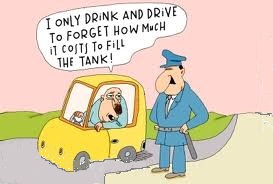Hey! Here are some things that could help you save some money. They are from research and experience. Please feel free to add more tips or suggestions as comments:
- Keep your car in good shape. Do the oil change when required; change the air filter whenever it is dirty, check fuel injectors...
- Travel light. Remove excess luggage in the car. It isn’t important for 4 people traveling in a car for an errand only 1 person can do (except you are rich enough to bear the burden of the extra fuel).
- Check your tyre pressure regularly and also know that worn tyres affect the fuel economy negatively. Also make sure the tyre in the car is the recommended tyre for the car.
- Accelerate slower and steadily. Rapid acceleration consumes a lot of fuel. Try to maintain a particular speed. Also brake gently. Anticipate the stop you want to make on time and start stopping way before it. This can be summarized as Gentle Driving.
- Combine many trips into one main one. Avoid short trips. Instead of driving to buy something down the road, take a walk instead. That saves your fuel and it's good exercise.
- Do not keep your car idle unnecessarily. CARS NOWADAYS DON’T NEED TO BE WARMED IN THE MORNINGS. They will warm up as you drive. Don’t rev the engine at idle. You are just wasting energy and ruining the engine.
- Do not remove the thermostat from your car or make the fans run permanently. The car optimizes its fuel economy when the engine is hot (that is when the temperature gauge is around the middle area of the scale). If your thermostat ever goes bad, replace it instead of removing it totally. We will talk about this in detail soon.
- Use the climate control efficiently.
- Do not over fill the fuel tank. You should stop adding fuel when the nozzle shuts off automatically the first time. Also make sure the fuel tank cap is closed tightly.



